Overview
This article identifies essential stakeholder management competency questions for CFOs, aimed at enhancing their effectiveness in managing financial initiatives. It underscores the importance of understanding stakeholder interests and highlights effective communication, conflict resolution, and alignment of goals. Supported by evidence, it demonstrates that effective stakeholder engagement significantly contributes to project success and financial performance. To succeed, CFOs must prioritize these competencies, ensuring they not only meet stakeholder expectations but also drive organizational success.
Introduction
Navigating the complex landscape of stakeholder relationships is crucial for CFOs aiming to drive financial success in small and medium enterprises. By identifying and engaging key stakeholders—from investors to employees—CFOs can harness valuable insights that align with their organization’s financial objectives. However, the challenge lies in effectively managing these diverse relationships and ensuring that all voices are heard.
How can CFOs strategically address stakeholder management competency questions to foster collaboration and achieve sustainable growth?
Transform Your Small/ Medium Business: How Do You Identify Key Stakeholders for Financial Success?
Recognizing important parties begins with a comprehensive with a vested interest in your business, including:
- Investors
- Employees
- Suppliers
- Customers
and surveys provides . Moreover, employing mapping tools for interested parties enables you to visualize their levels of influence and interest, allowing you to prioritize those individuals who can significantly affect . This strategic method not only boosts participant engagement but also aligns with the overarching goal of improving .
By focusing on and leveraging real-time analytics, CFOs can streamline their efforts and foster relationships that drive while continuously monitoring business health and operationalizing lessons learned.
Effective Communication: How Do You Ensure Clear Stakeholder Engagement Throughout a Project?
To enable efficient interactions, it is crucial to create a thorough strategy that answers about how and when parties involved will receive updates. Utilize a variety of channels—such as emails, meetings, and reports—to accommodate diverse preferences and . Consistently requesting input is essential for evaluating participant comprehension and improving messaging strategies as necessary. This proactive approach not only addresses concerns before they escalate but also fosters a culture of transparency and trust.
Studies show that organizations with efficient messaging strategies experience 4.5 times greater , emphasizing the significance of with involved parties in attaining . Moreover, 86% of employees link to poor interaction, highlighting the need for a well-organized dialogue strategy that incorporates stakeholder management competency questions to reduce risks and improve relationships with interested parties. Furthermore, organizations that excel in managing their constituents experience 20% higher customer satisfaction, further underscoring the critical role of in driving positive outcomes.
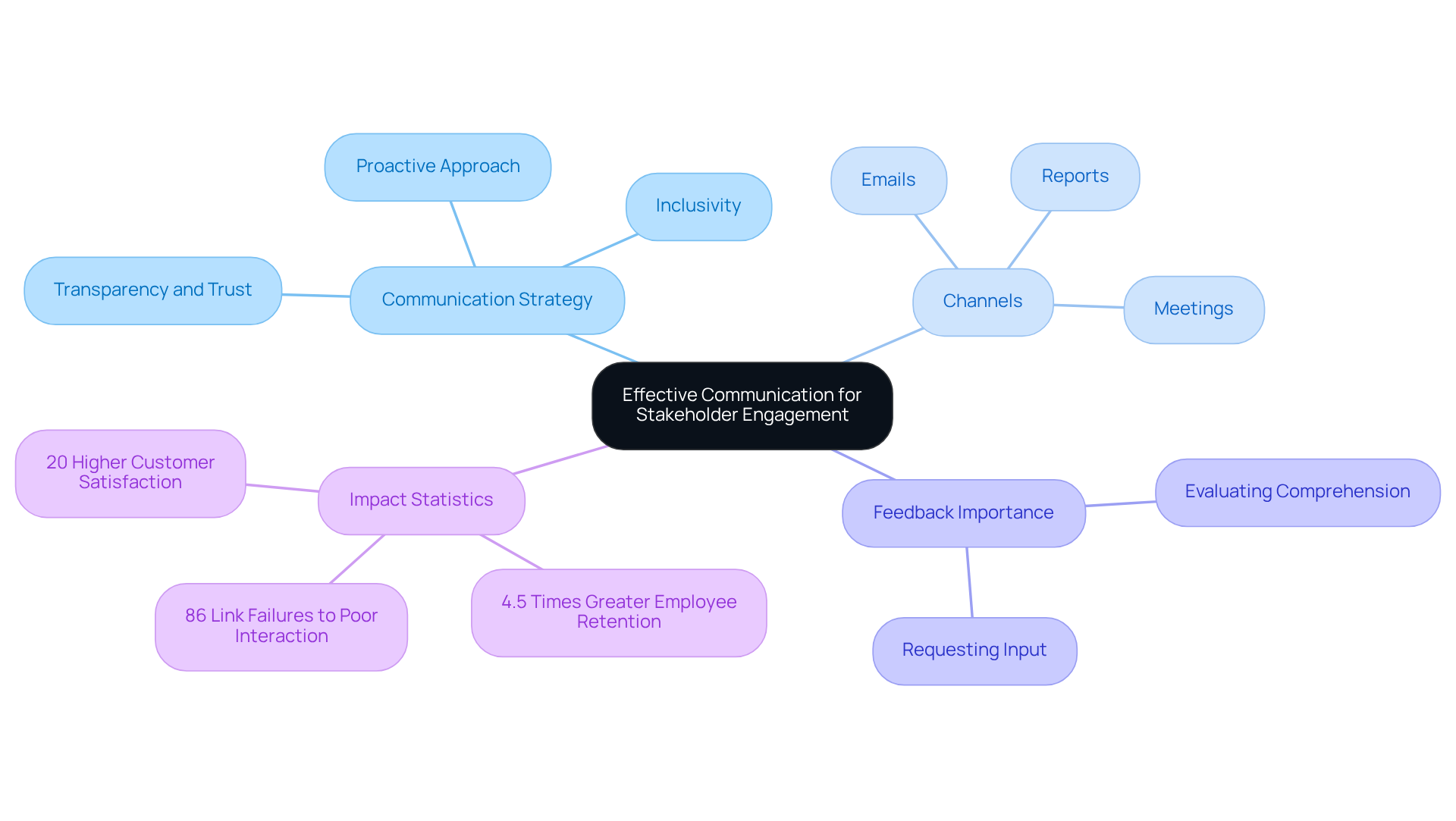
Conflict Resolution: How Do You Approach Stakeholder Disagreements to Maintain Project Integrity?
To effectively manage conflicts among interested parties, it is crucial to address promptly through open discussions. Employing active listening techniques, such as paraphrasing and summarizing, clarifies differing perspectives and fosters a collaborative atmosphere. Research indicates that 76% of workers report positive outcomes from , highlighting the potential for improved relationships and innovative solutions.
Implementing , such as interest-based negotiation, guides discussions toward mutually beneficial outcomes. This approach not only settles disputes but also enhances the integrity of the endeavor by ensuring that all voices are heard and valued. It is essential to document agreements reached during these discussions to promote accountability and facilitate follow-up actions.
Statistics indicate that nearly 85% of initiatives face conflicts among interested parties, which underscores the necessity for CFOs to address stakeholder management competency questions for effective resolution strategies. Additionally, 49% of contributors identified clashes between personalities or egos as a significant source of conflict, emphasizing the importance of understanding underlying issues. By proactively managing these conflicts, CFOs can uphold integrity and drive successful results in . Furthermore, is crucial, as it strengthens organizational capacity to handle disputes effectively. Unresolved conflicts can lead to a that hinders cooperation, making it imperative for CFOs to prioritize .
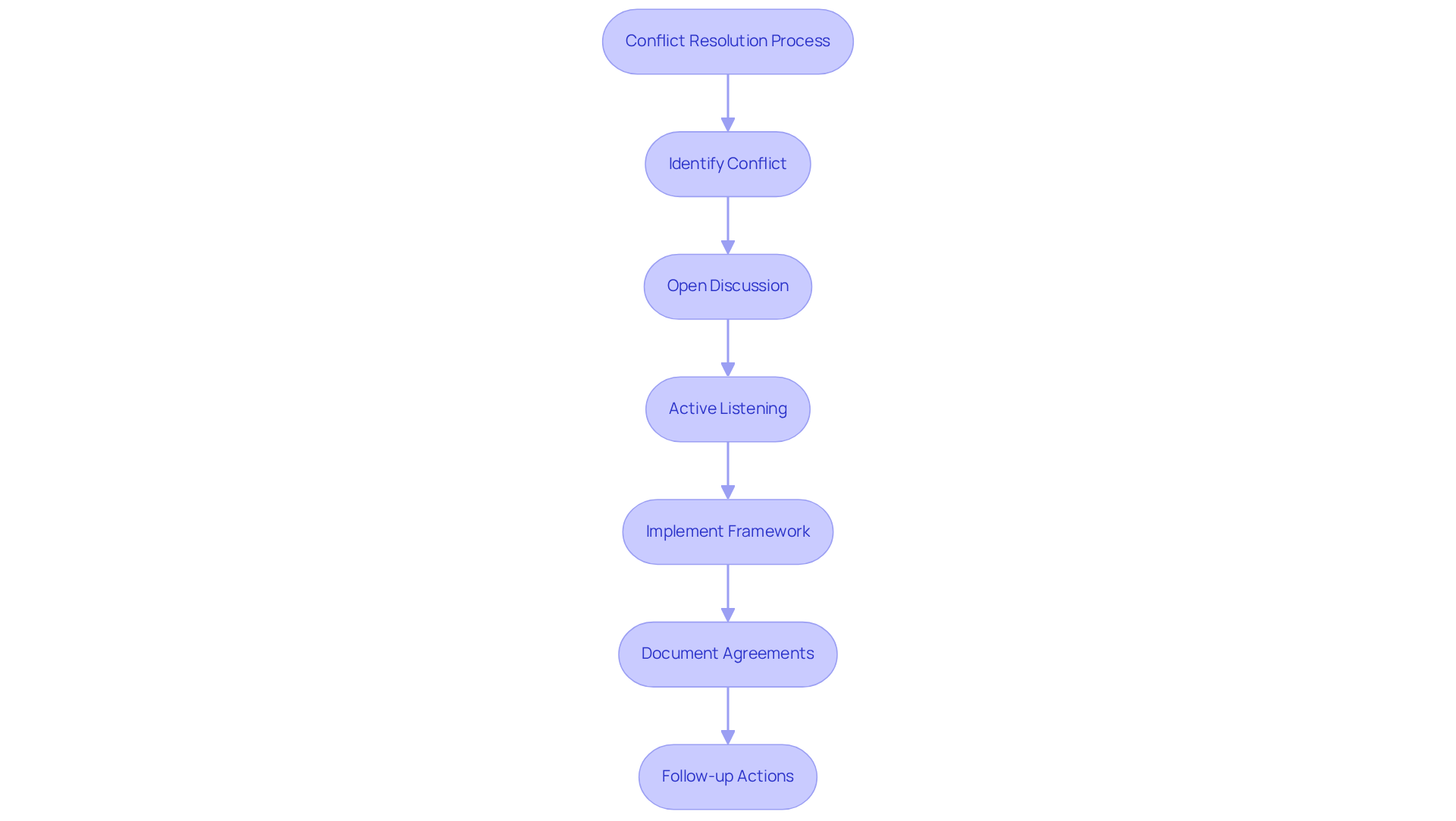
Alignment of Interests: How Do You Ensure Stakeholder Needs Align with Project Objectives?
To effectively align the interests of involved parties with goals, it is essential to address through a thorough analysis of those parties. This process begins with to identify interested parties and to understand their goals and expectations. Conducting workshops or meetings encourages open discussion about these goals and their connection to stakeholder management competency questions. Developing a collaborative vision document that details shared objectives and duties is crucial for effectively answering stakeholder management competency questions, as it ensures that all participants feel engaged in the success of the endeavor.
Research indicates that initiatives that effectively address stakeholder management competency questions among interested parties are significantly more likely to succeed. Studies demonstrate that 85% of with those involved. Conversely, disregarding collaboration can lead to misalignment, opposition, and failure, resulting in delays and increased expenses. By actively involving interested parties in stakeholder management competency questions from the outset, especially once the charter is approved, organizations can mitigate risks and enhance teamwork, ultimately paving the way for success.
Moreover, adhering to a for enhancing stakeholder management competency questions—identifying participants, examining their interests, devising , and executing the engagement plan—can further ensure alignment and support throughout the initiative lifecycle.

Expectation Management: How Do You Handle Stakeholder Expectations Regarding Project Timelines?
Effective expectation management begins with establishing grounded in comprehensive evaluations. It is essential to communicate any potential delays or changes without delay, providing clear explanations and revised timelines to uphold transparency. As Bryan Kitch emphasizes, are critical for managing the expectations of stakeholders for the success of any initiative.
Utilizing can significantly improve the sharing of progress updates and milestones, ensuring that relevant parties remain informed about the status and any necessary adjustments. Regular updates, whether through weekly reports or bi-weekly meetings, align all parties and cultivate a .
Furthermore, in the process allows for their competency questions, which can enhance their commitment and support for the initiative. By democratizing decision-making and encouraging transparent dialogue, organizations can build trust and reliability, ultimately leading to improved outcomes.
Consistent updates regarding schedules and results not only mitigate misunderstandings but also bolster participant confidence in the success of the endeavor. The case study on 'Setting Realistic Expectations' illustrates that fosters trust over time, further underscoring the necessity for .
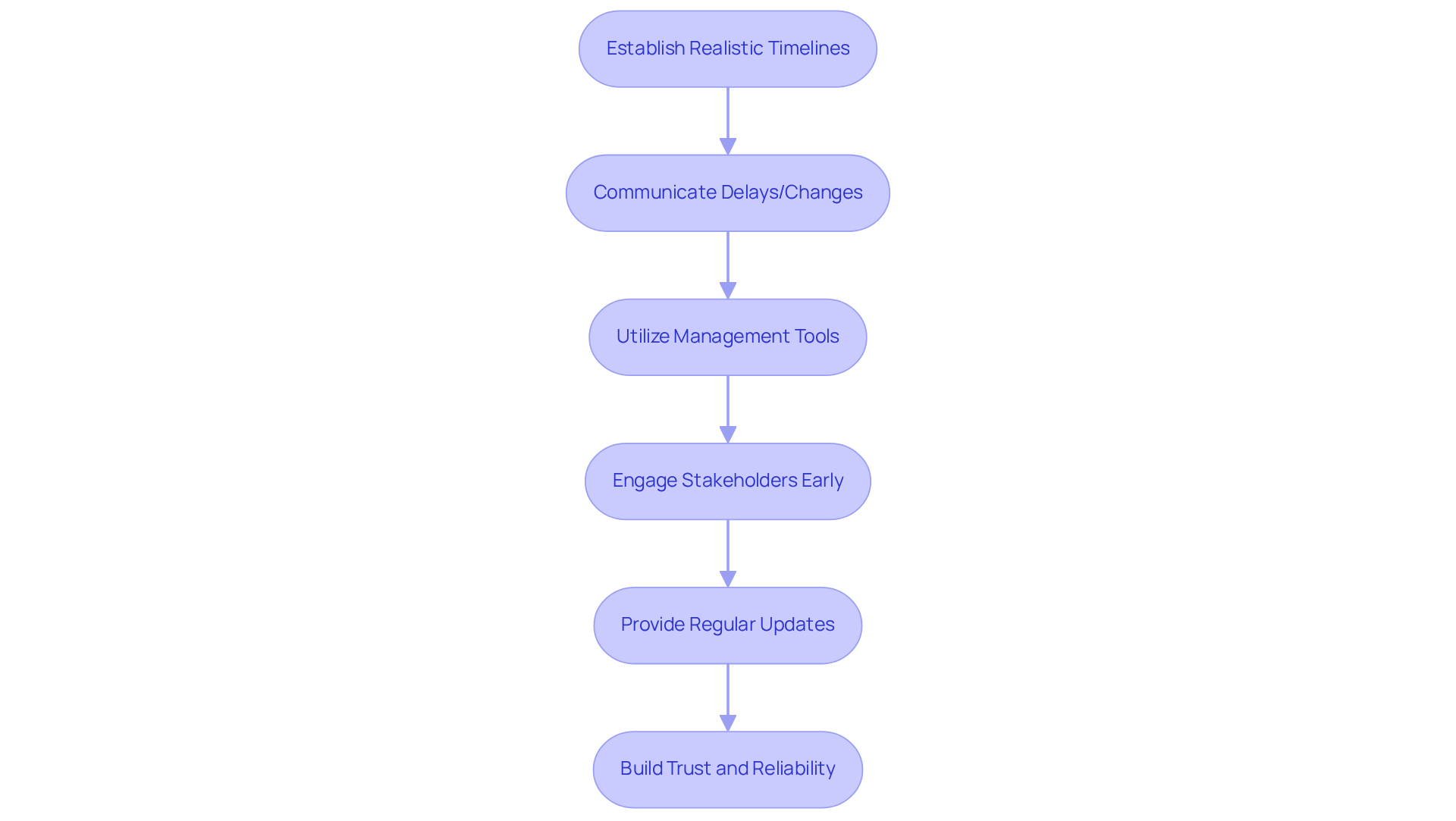
Feedback Utilization: How Do You Incorporate Stakeholder Input to Enhance Project Performance?
Establishing consistent , such as surveys or focus groups, is crucial for throughout the lifecycle of any endeavor. By leveraging from your client dashboard, you can efficiently analyze this feedback, identifying trends and pinpointing . Implementing changes based on this input not only demonstrates responsiveness but also helps answer by informing stakeholders of how their feedback has influenced decision-making. This method fosters a and supports a streamlined decision-making process, ultimately enhancing overall project performance.

Trust Building: How Do You Establish Credibility with Stakeholders to Foster Collaboration?
To cultivate trust, prioritize in all communications. This involves openly sharing both successes and challenges, demonstrating reliability and commitment. Moreover, and actively seeking their input reflects the importance of , showing that their opinions are valued and promoting a sense of ownership and collaboration. Frequent updates on project progress help address stakeholder management competency questions by strengthening trust in your leadership and aligning the expectations of involved parties with organizational goals.
Statistics indicate that organizations with can see a 20% boost in profits, highlighting the tangible benefits of transparency. Additionally, 93% of business leaders concur that directly enhances profitability, underscoring the significance of creating credibility with interested parties.
Effective transparency methods for CFOs encompass:
- Straightforward communication of
- Engaging interested parties in financial discussions to foster trust and cooperation
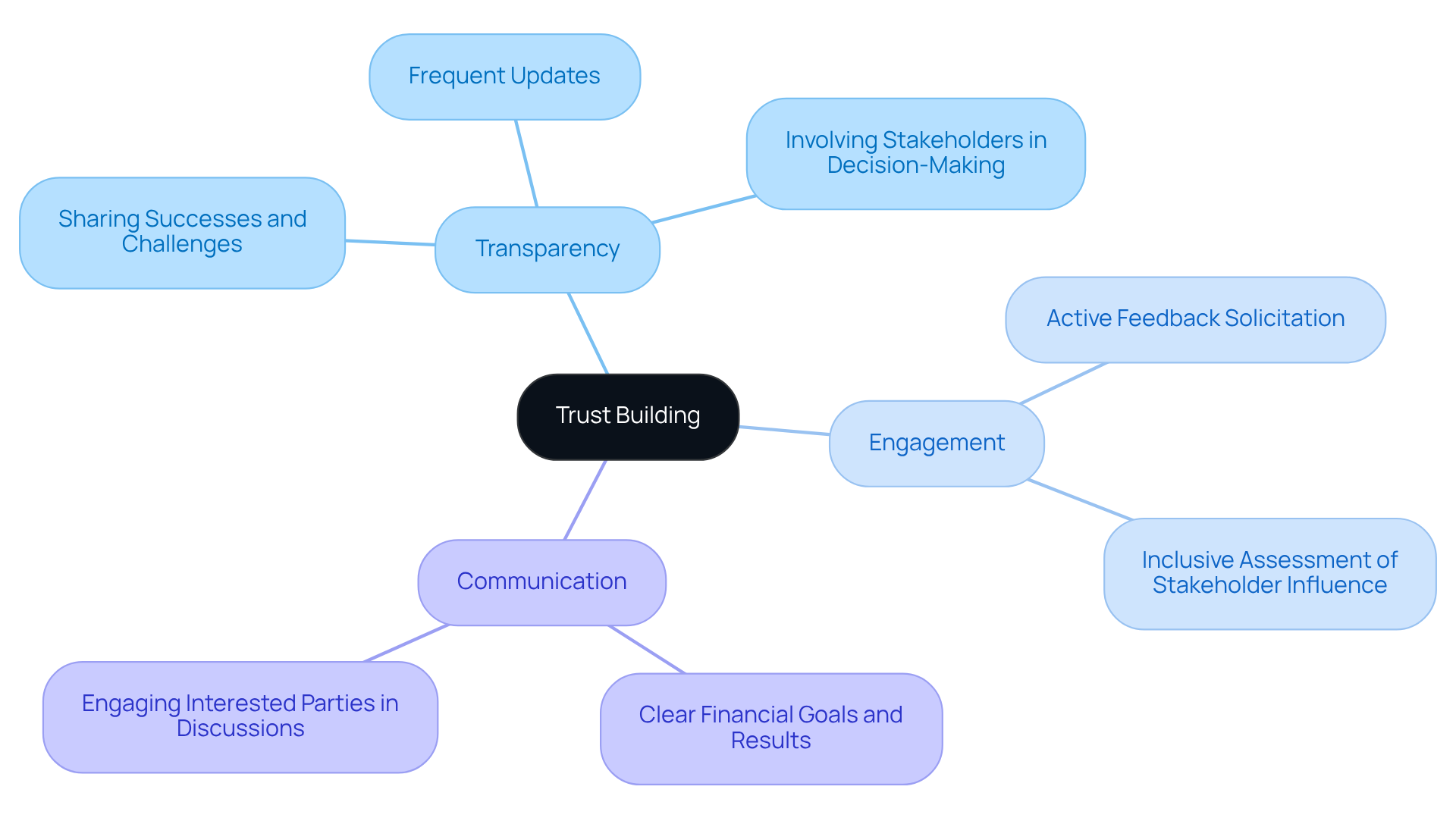
Engagement Strategies: How Do You Ensure Continuous Stakeholder Involvement Throughout the Project Lifecycle?
To ensure ongoing throughout the , developing is essential. This plan should clearly outline how and when involved parties will be engaged, incorporating regular check-ins and updates to keep them informed and actively participating. Moreover, utilizing collaborative tools can enhance , enabling participants to engage in discussions and decision-making processes. This method not only promotes a sense of connection to the initiative's progress but also boosts trust and dedication among participants, ultimately resulting in . Consistently involving interested parties aids in , minimizing the chance of misalignment and opposition.
For more information on or to discuss your specific needs, we invite you to contact us at . You can reach us at +1 (239) 428-9074 or visit us at 3200 Bailey Ln, Naples, FL 34105. Stay updated with the latest news and insights from our team led by Peter Griscom.
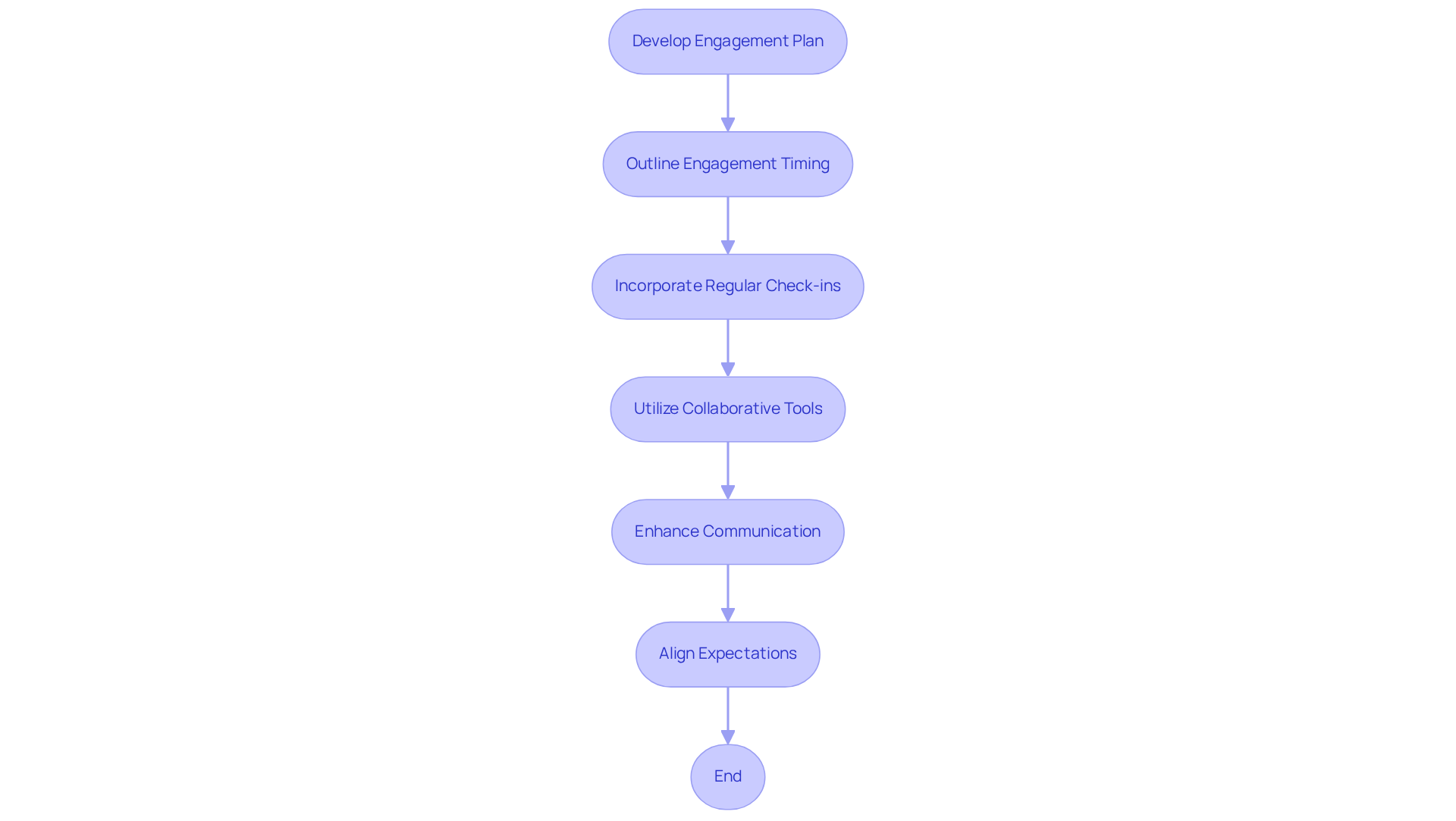
Diverse Relationship Management: How Do You Handle Stakeholder Engagement Across Different Geographic Locations?
Effectively managing diverse relationships with interested parties requires a nuanced approach that answers while accounting for and geographic challenges. Adjusting interaction strategies is critical; for instance, leveraging technology for virtual meetings can bridge time zone gaps and enhance teamwork. Ensuring that all parties have fosters transparency and builds trust. Furthermore, appointing can bolster communication, as they provide valuable insights into and regional expectations.
Statistics indicate that 88% of consumers actively seek information regarding a company's , underscoring the necessity for clear and consistent messaging. Additionally, 70% of millennials assert that a company's commitment to the community influences their employment decisions, which underscores the relevance of as organizations engage purposefully with interested parties across diverse cultural contexts. Moreover, firms that prioritize CSR observe a 35% increase in employee retention over five years, further illustrating the significance of CSR in fostering relationships with interested parties.
Case studies reveal effective strategies for . For example, the Commonwealth of Massachusetts conducted 18 public hearings to consult a broad spectrum of stakeholders, exemplifying the efficacy of . These hearings not only gathered diverse feedback but also led to substantial modifications in the final zoning plan, demonstrating the impact of participant engagement. By understanding and adapting to the unique cultural dynamics of each interest group, organizations can improve their approach to stakeholder management competency questions and achieve superior outcomes. As noted by Kearns & West, selecting appropriate involvement strategies based on objectives and timing is vital for in various contexts.

Stakeholder Analysis: How Do You Approach Mapping and Prioritizing Stakeholder Influence?
To effectively manage interested parties and address , begin by creating a detailed list and organizing them according to their levels of influence and interest. The Power-Interest Grid serves as a valuable tool for visualizing , enabling you to prioritize interaction efforts strategically. Consistently reviewing and refreshing your analysis of involved parties is essential, as the dynamics of their influence can shift throughout the lifecycle of the initiative. This proactive approach not only enhances your engagement strategies but also aligns them with the evolving dynamics of interested parties.
Data indicates that initiatives with robust are up to 70% more likely to achieve their objectives, underscoring the importance of for initiative success. Moreover, approximately 70% of change initiatives fail to meet their goals, highlighting the critical need for effective participant engagement to mitigate this risk. By employing and prioritization, including addressing and utilizing advanced metrics such as the (SSI) and Return on Engagement (ROE), you can ensure that your strategies remain relevant and effective in achieving .
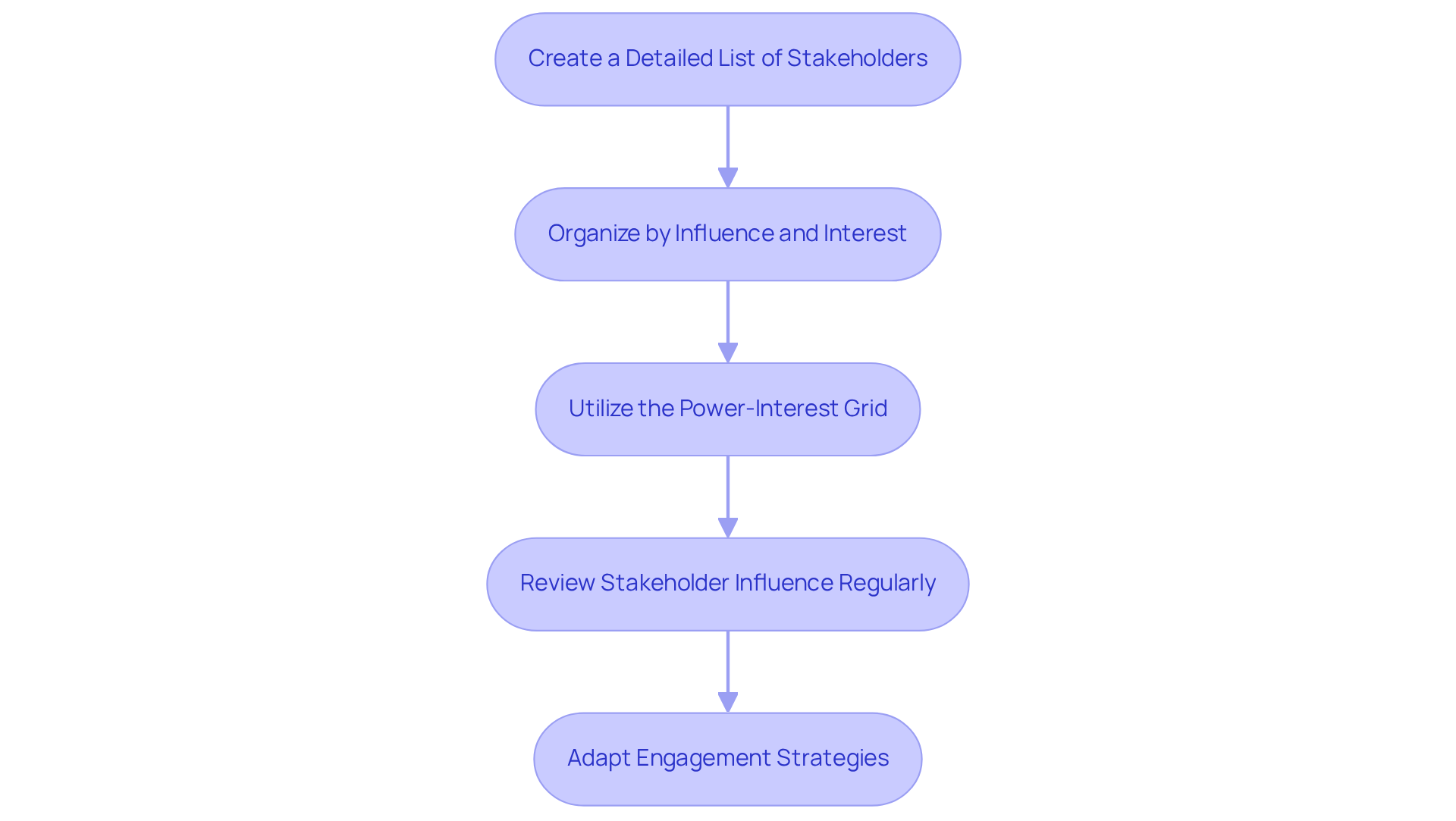
Conclusion
Recognizing the pivotal role of stakeholder management is essential for CFOs aiming to enhance financial performance and drive sustainable growth within their organizations. By effectively identifying, engaging, and aligning with key stakeholders, financial leaders can foster relationships that not only support project success but also contribute to overall business resilience.
Throughout the article, various strategies were explored, including the importance of clear communication, conflict resolution, expectation management, and incorporating stakeholder feedback. Each element plays a vital role in ensuring that stakeholders feel valued and engaged, which ultimately leads to improved project outcomes and higher satisfaction levels. Moreover, understanding the diverse needs of stakeholders across different geographic locations further emphasizes the necessity for tailored engagement strategies.
In conclusion, the effectiveness of stakeholder management cannot be overstated. It is a critical competency for CFOs that directly influences financial success and organizational integrity. By committing to transparent communication, proactive conflict resolution, and continuous engagement, CFOs can not only enhance their leadership effectiveness but also build a foundation of trust and collaboration that propels their organizations toward long-term success. Embracing these practices will ensure that stakeholder interests are not only considered but prioritized, creating a harmonious environment conducive to achieving shared goals.
Frequently Asked Questions
How can I identify key stakeholders for my small or medium business?
Identify key stakeholders by mapping all individuals and groups with a vested interest in your business, including investors, employees, suppliers, and customers. Conducting interviews and surveys can provide insights into their interests and concerns.
What tools can help visualize stakeholder influence and interest?
Employing mapping tools for interested parties allows you to visualize their levels of influence and interest, helping you prioritize those who can significantly affect your financial results.
Why is it important to engage with key influencers in my business?
Engaging with key influencers helps to boost participant engagement and aligns with the goal of improving financial performance for small to medium enterprises.
What communication strategies can ensure clear stakeholder engagement throughout a project?
Create a thorough strategy that outlines how and when stakeholders will receive updates. Utilize various channels such as emails, meetings, and reports to accommodate diverse preferences and ensure inclusivity.
How can I evaluate stakeholder comprehension and improve messaging strategies?
Consistently request input from stakeholders to evaluate their understanding and make necessary improvements to your messaging strategies.
What impact does effective communication have on employee retention and project success?
Organizations with efficient messaging strategies experience 4.5 times greater employee retention, and 86% of employees link workplace failures to poor interaction, emphasizing the importance of transparent engagement.
How should I approach conflicts among stakeholders?
Address conflicts promptly through open discussions, employing active listening techniques to clarify differing perspectives and foster collaboration.
What frameworks can guide discussions toward resolving stakeholder disputes?
Implement structured conflict resolution frameworks, such as interest-based negotiation, to guide discussions toward mutually beneficial outcomes.
Why is it essential to document agreements reached during conflict resolution discussions?
Documenting agreements promotes accountability and facilitates follow-up actions to ensure all parties are aligned.
What percentage of initiatives face conflicts among stakeholders, and why is this significant?
Nearly 85% of initiatives face conflicts among stakeholders, highlighting the necessity for effective resolution strategies to maintain project integrity.
What role does conflict management training play in an organization?
Investing in conflict management training strengthens the organization's capacity to handle disputes effectively, preventing unresolved conflicts from leading to a toxic workplace culture.




